Category — News
CBS News 60 Minutes Visits the Vatican Library
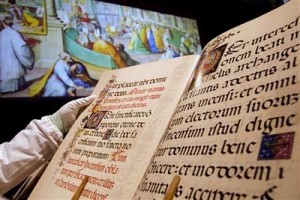 I hope everyone stayed tuned to CBS after the Masters yesterday to watch 60 Minutes. They did a marvelous piece on the Vatican Library with Morely Safer as host. In case you missed it, video is available at CBS News.
I hope everyone stayed tuned to CBS after the Masters yesterday to watch 60 Minutes. They did a marvelous piece on the Vatican Library with Morely Safer as host. In case you missed it, video is available at CBS News.
April 11, 2011 Comments Off on CBS News 60 Minutes Visits the Vatican Library
The Recreation of a Medieval Organ at St. Fagans
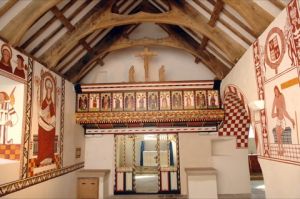 Here is a quick link to a very interesting project. A team has worked to recreate a medieval organ. None survived the reformation so they’ve faced enormous obstacles researching this project. A story on the BBC lets you hear a sound that has not been heard for centuries.
Here is a quick link to a very interesting project. A team has worked to recreate a medieval organ. None survived the reformation so they’ve faced enormous obstacles researching this project. A story on the BBC lets you hear a sound that has not been heard for centuries.
April 8, 2011 Comments Off on The Recreation of a Medieval Organ at St. Fagans
Enjoying the Filth of the Middle Ages from a Safe Smelling Distance
 First, a bit of an apology for having been away for so long but life does intrude. Next, a promise, we have tons of new images from books of hours for the gallery. We’ll be uploading them soon. Finally, we’re thinking of providing some video tutorials on recreating the lettering and art from medieval times with modern tools and materials for art journaling or other popular craft applications. We would appreciate your imput on this idea.
First, a bit of an apology for having been away for so long but life does intrude. Next, a promise, we have tons of new images from books of hours for the gallery. We’ll be uploading them soon. Finally, we’re thinking of providing some video tutorials on recreating the lettering and art from medieval times with modern tools and materials for art journaling or other popular craft applications. We would appreciate your imput on this idea.
In the medieval sanitation and recycling department, here is a fine list of why medieval London probably smelled worse than we can imagine from our place in time. From, The Telegraph, “Medieval London: 10 disgusting facts:”
1. The inhabitants of medieval London (human and animal) produced 50 tons of excrement a day.
2. In medieval London, there were no pavements – people had to walk on the bare earth. Except, unfortunately, it wasn’t bare earth – the ground was covered with the excrement of both people and animals, as well as animal entrails and rotting food.
To read the rest, follow this link.
April 5, 2011 2 Comments
The Devil’s Bible or Codex Gigas Goes on Display September 20th
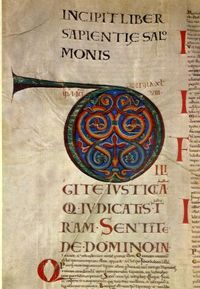 The Devil’s Bible or Codex Gigas is the biggest medieval book in the world. It has a fascinating history and legend. It will be on public display for the first time in many years at the National Library of Sweden on September 20th. From The Prague Post:
The Devil’s Bible or Codex Gigas is the biggest medieval book in the world. It has a fascinating history and legend. It will be on public display for the first time in many years at the National Library of Sweden on September 20th. From The Prague Post:
…legend holds that a monk was sentenced to be buried alive for a breach in Benedictine conduct. In order to forgo his punishment, he agreed to make the most magnificent book the world had ever seen in honor of his brotherhood. The catch was that he was given just one night to complete this Herculean task.
Around midnight, the monk realized he would not be able to finish by daylight, so he invoked the devil to help him, selling his soul in the process. As a tribute to his helper, the monk included a quirky image of the devil within the manuscript, thus giving the book its nickname.
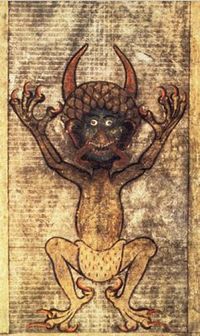 This medieval illuminated manuscript is extremely important. It’s size alone makes it unique. From The Prague Post:
This medieval illuminated manuscript is extremely important. It’s size alone makes it unique. From The Prague Post:
Made of the skins of about 160 animals — some say donkeys, others say calves — the manuscript measures a king-size 90 x 50 x 22 centimeters (roughly 36 x 20 x 9 inches) and weighs 75 kilos (165 pounds), requiring two people to lift it.
 It was first mentioned towards the end of the 13th century and probably dates from the early years of that century. Analysis of the writing style have led to the hypothesis that the book is the work of an individual scribe.
However, what is most important about this phenomenal work is the content. From The Prague Post:
The leather parchment pages contain both the Old and New Testaments of the Bible in pre-Vulgate Latin and much more: a Penitential (a priest’s manual of sins and suitable penance); Isidore of Seville’s Etymologiae, a 20-volume encyclopedia from the seventh century; Josephus’ Antiquities of the Jews; a necrology of the Podlažice monastery as well as a list of all the living monks in Podlažice; and numerous texts of mystical incantations for everything from curing illnesses to catching thieves.
Individuals swayed by mystical thinking believe the incantations in the manuscript have real power and, when the Devil’s Bible was displayed many years ago at the National Museum of Sweden, it was attacked. Thus, considerable security and secrecy surround the current display. For more information on this beautifully illuminated manuscript, visit the National Library of Sweden website.
[tags]codex gigas, devil’s bible, national library of sweden, illuminated manscript, medieval manuscript, medieval scribe[/tags]
September 13, 2007 Comments Off on The Devil’s Bible or Codex Gigas Goes on Display September 20th
Introduction to Manuscript Studies from Raymond Clemens and Timothy Graham
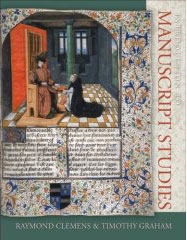 A wonderful new book on medieval illuminated manuscipts is coming from Cornell University Press in October. Drs. Raymond Clemens (Illinois State University) and Timothy Graham (University of New Mexico) are publishing Introduction to Manuscript Studies
A wonderful new book on medieval illuminated manuscipts is coming from Cornell University Press in October. Drs. Raymond Clemens (Illinois State University) and Timothy Graham (University of New Mexico) are publishing Introduction to Manuscript Studies which promises to become a must-have resource for anyone interested in the study of medieval calligraphy as well as those interested in re-creating the art in today’s world. It will be available in both hard and soft covers. From Cornell University Press:
Providing a comprehensive and accessible orientation to the field of medieval manuscript studies, this lavishly illustrated book by Raymond Clemens and Timothy Graham is unique among handbooks on paleography, codicology, and manuscript illumination in its scope and level of detail. It will be of immeasurable help to students in history, art history, literature, and religious studies who are encountering medieval manuscripts for the first time, while also appealing to advanced scholars and general readers interested in the history of the book before the age of print.
From the University of New Mexico press release:
The book explains in detail how parchment, inks and papers were made, and includes recipes used by medieval workmen. It explores the art of decoration and gives special attention to conventions of punctuation and abbreviation and the genres of manuscripts including books of hours, maps, calendars, rolls and scrolls. There is also an explanation of how to establish the origin and provenance of a manuscript.
Break open your piggy bank. This book looks like the best resource that has been published in many years.
[tags]medieval manuscript, calligraphy, medieval studies, cornell university press, raymond clemons, timothy graham[/tags]
August 28, 2007 Comments Off on Introduction to Manuscript Studies from Raymond Clemens and Timothy Graham

